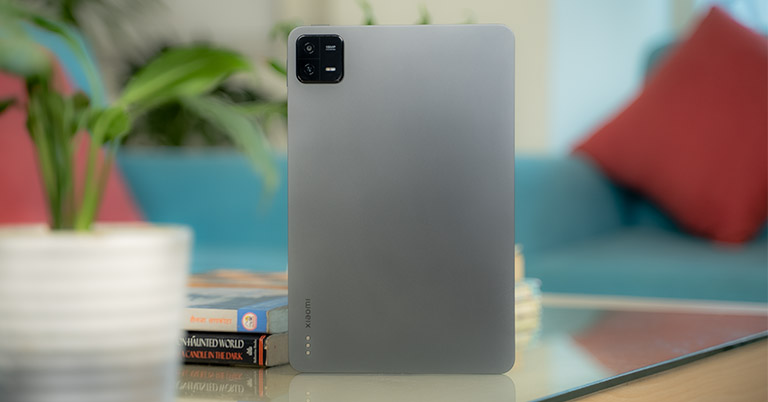
So last year, Xiaomi did the unthinkable — it made Android tablets exciting again. The Xiaomi Pad 5 was an easy recommendation for anyone looking for a solid Android tablet that gets all the basics right.
Now a year later, Xiaomi has followed it up with the Pad 6. And it brings a bunch of small but notable upgrades across the board — including a premium build quality, a sharper display, and a more powerful processor.
But more importantly, these upgrades don’t come with a price jump either since the Xiaomi Pad 6 still starts at NPR 39,999 for the 6/128GB version which is incredible. Even cheaper than the Pad 5 that launched back in 2021 at the starting price of 44,999 for the same trim.
Xiaomi Pad 6 Specifications:
- Dimension: 254 x 165.2 x 6.5 mm, 490gm
- Display: 11″ IPS LCD, 144Hz refresh rate, 240Hz sampling rate, HDR10, Dolby Vision, 550 nits (peak) brightness
- Resolution: 2.8K (2880 x 1800 pixels), 309 PPI
- Rear Camera: 13MP primary
- Front Camera: 8MP
- Processor: Snapdragon 870 (7nm)
- Memory: 6/8GB RAM, 128/256 UFS 3.1 storage
- OS: MIUI Pad 14 on Android 13
- Battery: 8840mAh, 33W Fast Charging
- Audio: Quad speakers
- Color Options: Black, Blue, Gold
- Price in Nepal: NPR 39,999 (6/128GB), NPR 43,999 (8/256GB)
Xiaomi Pad 6 Review
Build
- Glass Front, Aluminum Frame, Aluminum Back
Let me start with the build. the Xiaomi Pad 6 gets some love in terms of the build quality. I honestly didn’t mind the plastic back on the Xiaomi Pad 5 that much, so this jump to a more premium aluminum back — with a matte finish no less — is a welcome upgrade. What’s even more impressive is that despite the use of metal, the Pad 6 is actually lighter than its predecessor.
It is also pretty thin and Xiaomi has also tried to rub off a sort of… premium look from the Xiaomi 13 lineup of flagship phones with this camera block. If only Xiaomi had gone with a curved finish for a more comfortable hands-on feel, the Pad 6 would’ve been a solid A+ in my books as far as design and build quality are concerned.
Oh — and I almost forgot — its USB-C port now has the USB 3.2 standard too (instead of the older USB 2.0 like on the OnePlus Pad). That means the Xiaomi Pad 6 can connect up to a 4K 60Hz external display and it also has much faster file transfer speeds.
However, you’ll need a separate USB 3.2-compatible cable for all this to work because the USB-A to USB-C data cable you get inside the box itself is USB 2.0 only.
Display
- 11-inch IPS LCD, 144Hz
- Dolby Vision
This 11” display on the Xiaomi Pad 6 is also quite good for the price! It’s slightly sharper now, slightly smoother, and also slightly brighter. Xiaomi is still sticking to a 16:10 aspect ratio that’s better suited for watching videos and I love it. Compared to something like the OnePlus Pad or the iPad Pro which has a squarish display, you don’t need to deal with distracting black bars nearly as much when binging anything here.
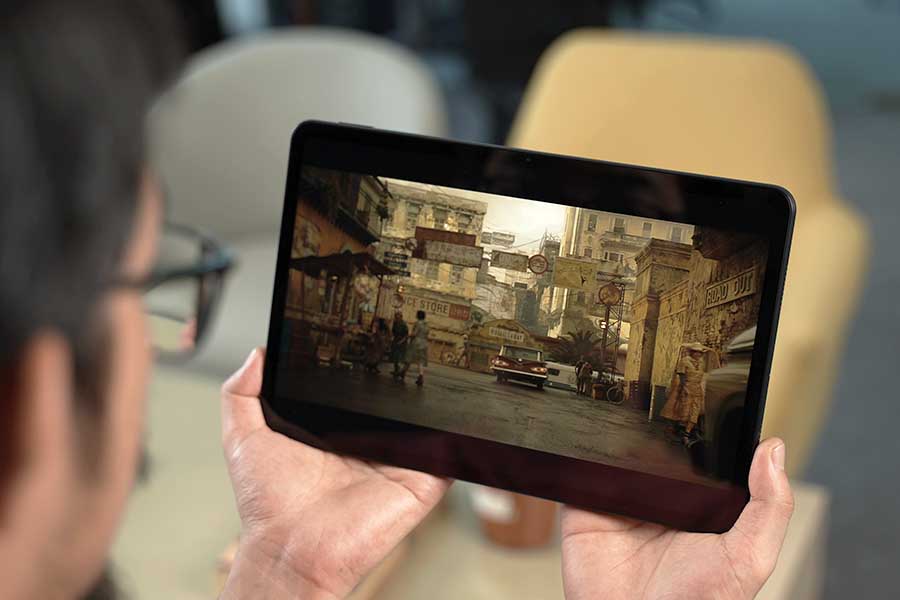
Obviously, squarish aspect ratios shine in their own way — like it’s better for reading and multitasking and stuff like that! But, overall, you can learn to live with either of them perfectly fine.
Now when it comes to the core quality of the display itself, I don’t have many complaints. The default “Original color PRO” profile looks absolutely amazing to my eyes, with just the right balance of saturation, contrast levels, and color temperature.
Don’t worry, if you prefer a bit punchier and more vibrant colors, you can also go with the “Vivid” and “Saturated” presets. Or even customize everything including RGB coverage, hue, saturation, contrast, and gamma levels.
How’s the 144Hz refresh rate?
I’m also enjoying this 144Hz refresh rate experience on the Xiaomi Pad 6, however, it’s not as consistent and polished as I’d like. For example, when leaving it at the default option that dynamically switches between different refresh rates to save power, it doesn’t hit 144Hz on any apps or games except Injustice 2.
And even when explicitly setting it to 144Hz — I don’t know what’s happening but — it sometimes goes 144Hz while clinging to 120Hz most of the time. That reminds me, my Xiaomi Pad 6 is also struggling with HDR playback. It does have both Dolby Vision and HDR10 certification but only HDR playback is available on Netflix.
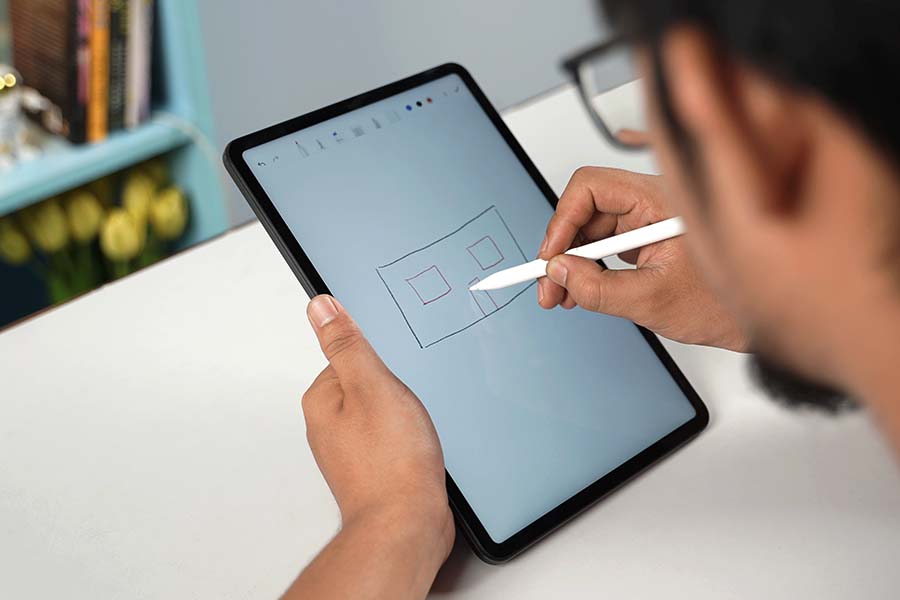
Plus, for some reason, when I play HDR video on Netflix, everything looks way too pale and washed out. It’s the same thing with my local HDR videos, although the ones with Dolby Vision play perfectly fine.
I remember that last year’s Xiaomi Pad 5 had no trouble with Dolby Vision and HDR playback at all, but right now, it has the same problem as the Pad 6. So I hope Xiaomi is working on a fix as we speak because, for devices geared toward media consumption, this is a pretty big deal.
The quad speakers are quite nice though. While it’s not as loud or detailed as the OnePlus Pad, this guy sounds perfectly fine for listening to music or watching movies and shows. Xiaomi has specially tuned it with boosted trebles so that’s what you’re gonna hear most of the time, but there’s also an option to set a custom equalizer.
MIUI 14 for Pad
Okay, so let me start the review with the software side of things! Now, as you guys might know, I recently published a review of the Oneplus Pad where I said that I was a little underwhelmed with its software experience, but after testing the Xiaomi Pad 6 for almost 2 weeks now, what I can say is it is quite the breath of fresh air.
It’s almost as if… Xiaomi carefully studied where OnePlus struggled with its software and managed to avoid those pitfalls altogether.
This dock — for example — is persistent across the UI on the Pad 6 compared to how the OnePlus Pad lets you access it from the home screen only. As a result, I can easily access my favorite apps to open them in a floating window or in split-screen mode with a simple swipe up from anywhere I want. It’s so easy!
And that irritating keyboard bug I mentioned in my OnePlus Pad review is also non-existent on the Xiaomi Pad 6. Both Gboard and Microsoft’s SwiftKey seamlessly split across the sides for an easier typing experience — be it in portrait or landscape orientation.
I’m also happy to see that Facebook has no trouble running in landscape mode on the Xiaomi Pad 6 either. Instagram still sticks out like a sore thumb and I wouldn’t exactly call this layout “optimized” or anything but at least it works!
Other Features
An interesting new feature on the Xiaomi Pad 6 is something called “Smartphone Link”, which lets you wirelessly duplicate your phone’s display on the tablet. But unfortunately, it only works on Xiaomi 13 Pro at the moment.
I really don’t think Xiaomi should be limiting such useful things to premium phones, so hopefully the company has plans to bring this feature to its non-flagship devices as well.
Apart from this, there are a few UI choices I’m not fond of here. Like when triggering the split-screen menu — for instance — you need to drag the app all the way to the corner of the screen. Or else it just opens the app in full screen. Likewise, a handy sidebar to store different shortcuts or apps is still missing on Xiaomi tablets.
Performance
- Snapdragon 870 (7nm mobile platform)
- Adreno 650 GPU
- 6/8GB RAM, 128/256GB storage
Anyway, talking about the raw performance, compared to last year’s Mi Pad 5, you get a much more powerful Snapdragon 870 chip here. And the thing I immediately noticed when I first started using the Xiaomi Pad 6 is that it actually felt more responsive. This is because Xiaomi has notably toned down the system animation scaling across the UI.
And I gotta admit that’s a… pretty genius move. Other than this, things like browsing the web, typing up emails, watching movies, or playing games are no problem for this guy.
It does have a somewhat strict memory management technique to save power, but that’s easily fixable by changing a few settings.
Gaming
As for gaming, with the SD 870 chip and up to 8GB RAM, it’s really no surprise when I say that this tablet handles most games pretty well. Like PUBG Mobile at a smooth 60 fps under HDR graphics and Extreme frame rates or even Genshin Impact at High graphics and 60 fps. Injustice 2 can also hit 120+ fps at times, even though it mostly comes down to around 100 fps on average.
But despite the decent gaming performance, the Xiaomi Pad 6 gets quite warm under heavy load. Another thing I also didn’t like is Xiaomi isn’t committing to any number of software upgrades for this thing either. Most other news outlets say it will be getting three years of security updates, but an official confirmation would be nicer!
Camera
- 13MP Primary
- 8MP Front
For attending video conferences (or taking occasional selfies), the Xiaomi Pad 6 brings an 8MP sensor on the front. Just like last time. However, it’s now placed horizontally instead of in a portrait layout, which makes all the difference in the world.
Xiaomi’s “Center Stage” clone called “Focus Frame” also works in most apps. Like Zoom, Google Meet, WhatsApp, and even Messenger. Whereas the 13MP camera at the back is fine for taking notes and stuff but nothing more. Here are some samples.
Battery
- 8840mAH cell
- 33W Fast Charging
Finally, the Xiaomi Pad 6 gets a marginally larger battery as well — even if there isn’t any improvement in the battery backup itself since it’s now powering a sharper display. So in my typical usage pattern, I was getting roughly 8 hours of screen time, which is still impressive stuff.
I also like how Xiaomi ships a proper 33W charger this time while we only got a 22.5W power brick with the Xiaomi Pad 5.
Xiaomi Pad 6 Review: Conclusion
So, overall, it’s pretty needless to say that Xiaomi has once again delivered a stunning value-for-money tablet with the Pad 6. With the same aggressive pricing strategy, it is an absolute no-brainer to anyone looking for a solid Android tablet that excels at all the basics.
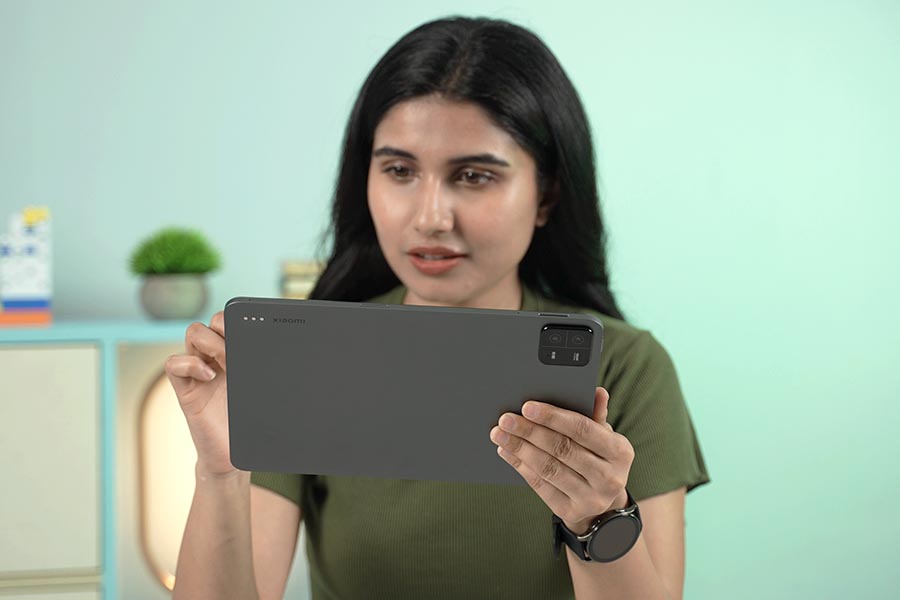
And after using this alongside the Oneplus Pad, I also really don’t think you need to be spending almost 50% more on the OnePus Pad. Xiaomi has even managed to price its accessories like keyboard and stylus cheaper compared to OnePlus, which is fantastic.
Plus, this second-gen Xiaomi Smart Pen is really good. Like really good. The input latency is almost unnoticeable and I like how it has dedicated buttons with a bunch of built-in shortcuts to help with your workflow. It would’ve been better if there was also some way to edit their actions, but I don’t mind. So yeah, the Xiaomi Pad 6 is yet another slam dunk and it sets the standard for just how good midrange Android tablets can get in 2023.
Xiaomi Pad 6 Review: Pros & Cons
Pros
- Nice display
- Decent everyday performance
- Great value for money
- Good Battery Life
Cons
- No guaranteed software updates
- Average Speakers












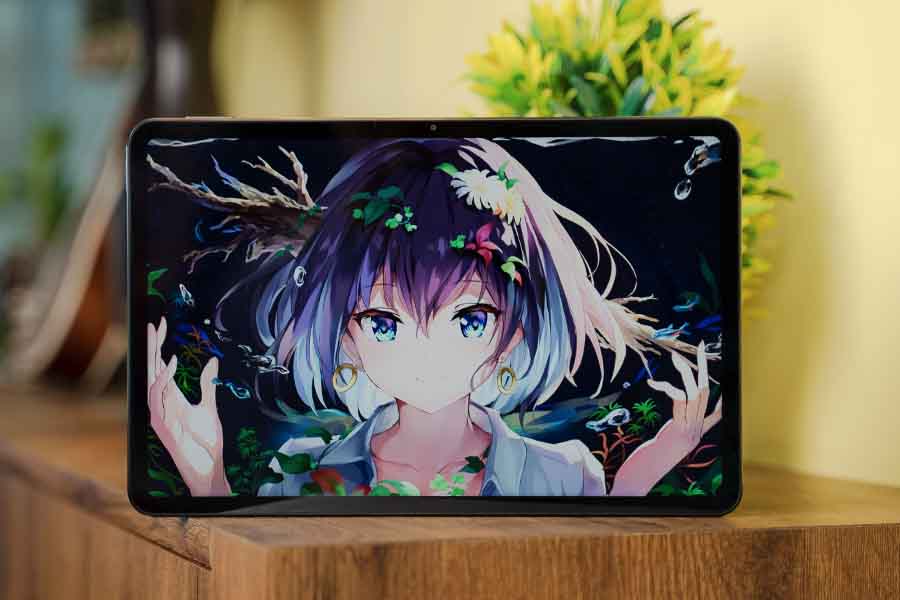
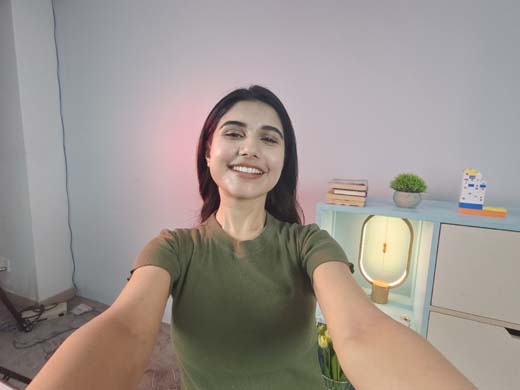

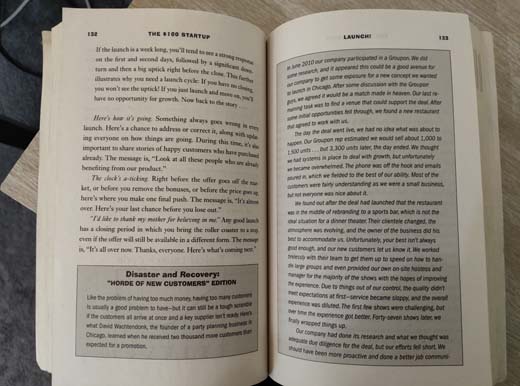
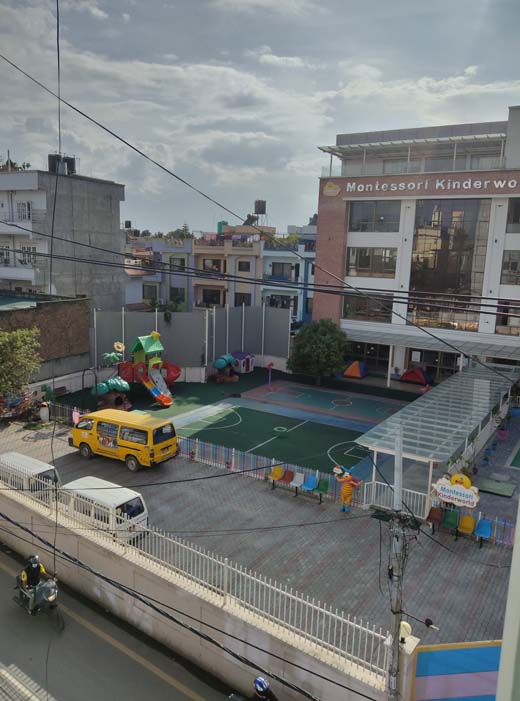





![Best Ultrabooks To Buy in Nepal 2024 [Updated] Best Ultrabook Laptops in Nepal 2023 - June Update](https://cdn.gadgetbytenepal.com/wp-content/uploads/2023/04/Best-Ultrabook-Laptops-in-Nepal-2023-June-Update.jpg)
![Best Gaming Laptops in Nepal 2024 [Updated] Best Gaming Laptops in Nepal 2023 - June Update](https://cdn.gadgetbytenepal.com/wp-content/uploads/2023/04/Best-Gaming-Laptops-in-Nepal-2023-June-Update.jpg)


![Best Mobile Phones Under Rs. 15,000 in Nepal [Updated] Best Phones Under 15000 in Nepal 2024 Budget Smartphones Cheap Affordable](https://cdn.gadgetbytenepal.com/wp-content/uploads/2024/03/Best-Phones-Under-15000-in-Nepal-2024.jpg)
![Best Mobile Phones Under Rs. 20,000 in Nepal [Updated] Best Mobile Phones Under NPR 20000 in Nepal 2023 Updated Samsung Xiaomi Redmi POCO Realme Narzo Benco](https://cdn.gadgetbytenepal.com/wp-content/uploads/2024/01/Best-Phones-Under-20000-in-Nepal-2024.jpg)
![Best Mobile Phones Under Rs. 30,000 in Nepal [Updated]](https://cdn.gadgetbytenepal.com/wp-content/uploads/2023/12/Best-Phones-Under-30000-in-Nepal-2024.jpg)
![Best Mobile Phones Under Rs. 40,000 in Nepal [Updated] Best Phones Under 40000 in Nepal 2024 Smartphones Mobile Midrange](https://cdn.gadgetbytenepal.com/wp-content/uploads/2024/02/Best-Phones-Under-40000-in-Nepal-2024.jpg)
![Best Mobile Phones Under Rs. 50,000 in Nepal [Updated] Best Phones Under 50000 in Nepal 2024 Smartphones Midrange](https://cdn.gadgetbytenepal.com/wp-content/uploads/2024/02/Best-Phones-Under-50000-in-Nepal-2024.jpg)
![Best Flagship Smartphones To Buy In Nepal [Updated] Best Smartphones in Nepal 2024 Flagship Premium Samsung Apple iPhone Xiaomi OnePlus Honor](https://cdn.gadgetbytenepal.com/wp-content/uploads/2023/09/Best-Smartphones-in-Nepal-2024.jpg)